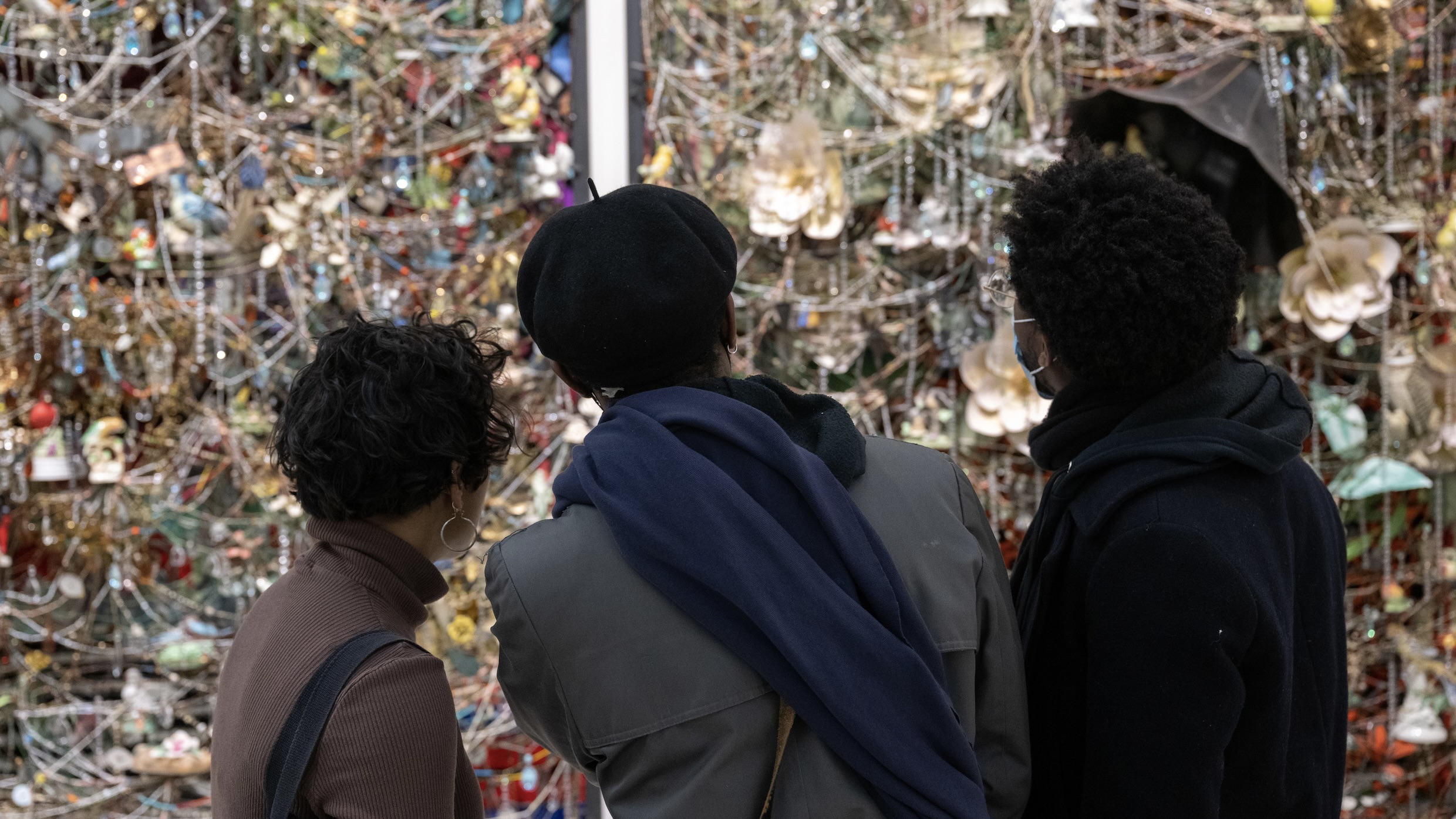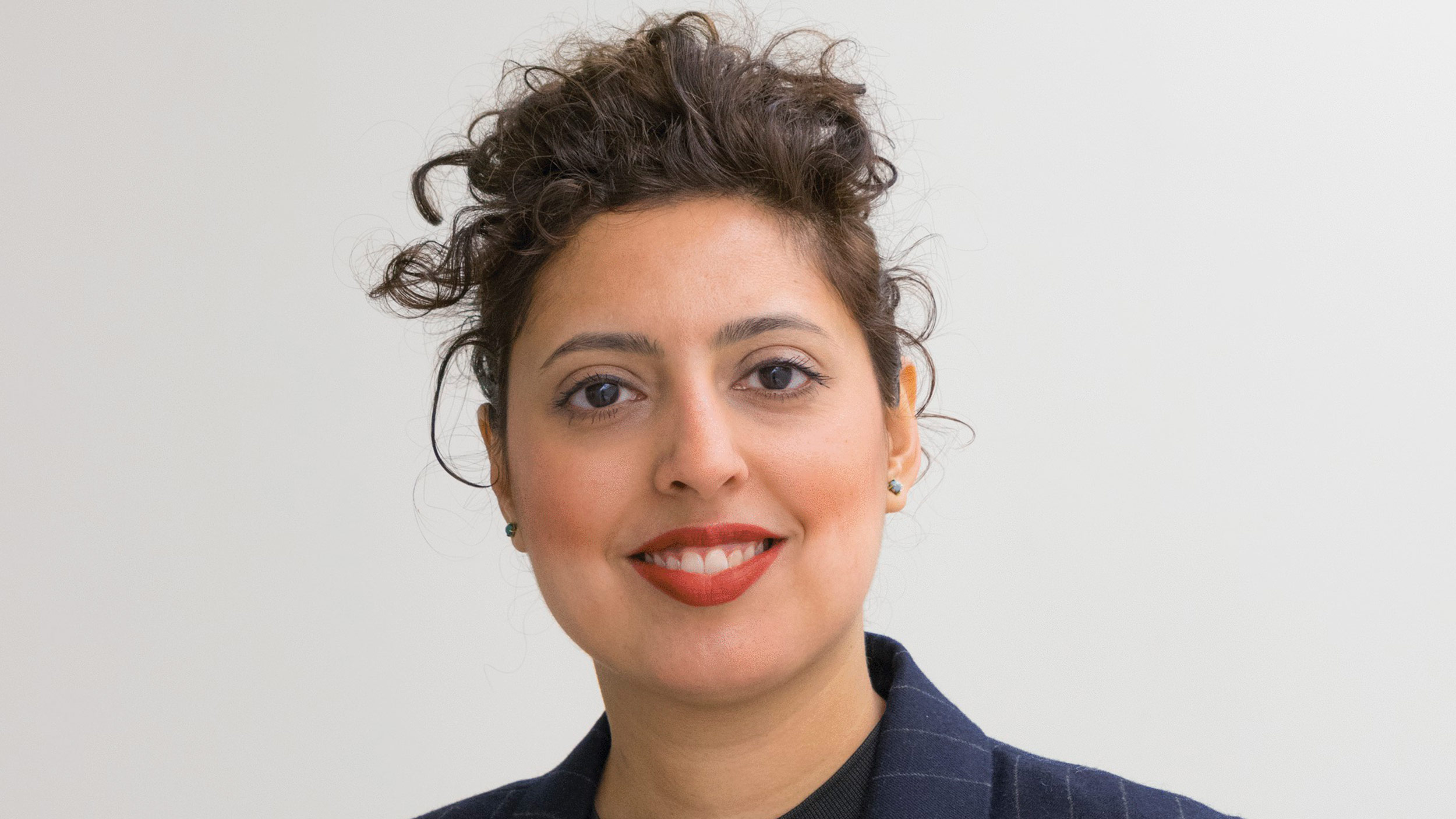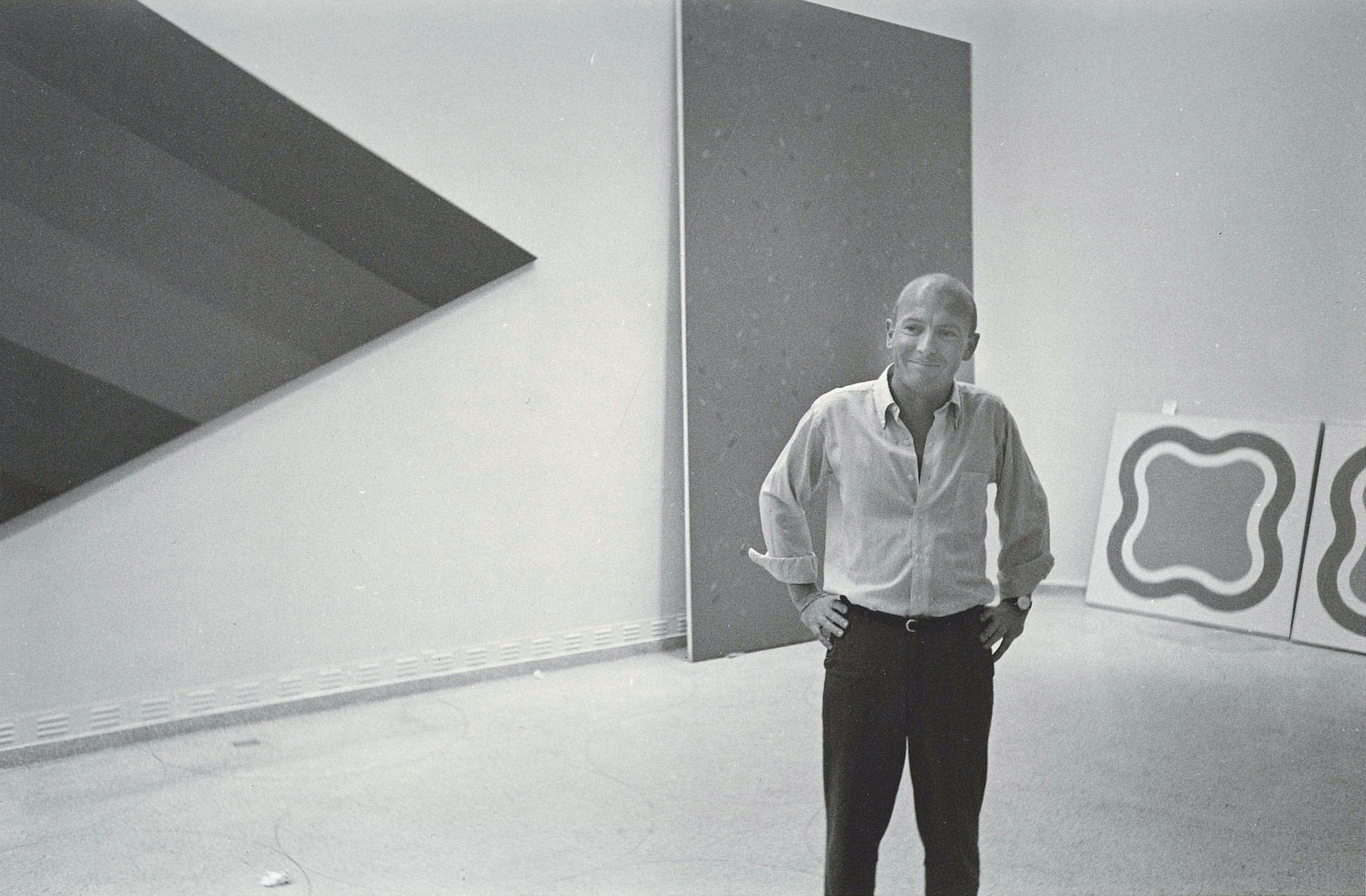Sometimes, the worlds of serious art and flashy pop culture come together in ways you might not expect. Take, for instance, the Solomon R. Guggenheim Museum, a place known for its amazing collections and striking building, and then think about "Miami Vice," that super stylish TV show from the 1980s with its pastel suits and fast boats. It seems like a pretty odd pairing, doesn't it? Yet, there's a story that ties these two very different things together, a tale that got a lot of people talking and, in a way, caused quite a stir in the art scene.
This whole situation really started getting attention around a particular art organizer, a person named Chaédria LaBouvier. She was someone who put together art shows at the Guggenheim, and her work included a big display about the artist Basquiat. But then, a separate incident involving her comments about "Miami Vice" on a social media platform, known as X, sparked a huge public discussion. It was a moment when online chatter about a beloved old TV show suddenly crossed paths with the serious business of a major art institution.
So, what actually happened when a prominent art figure decided to speak out about something as seemingly simple as a television show? We are going to look at how these two very separate parts of culture, one often seen as high-minded and the other as pure entertainment, ended up connected through a series of public events. It's a story that, in some respects, makes you think about how our personal tastes can sometimes lead to very public conversations, especially when you are someone who works at a well-known place like the Guggenheim.
- Anjali Arora Viral Video
- What Happened To Tia Mowry Daughter.https
- Christie Sides Relationships.https
- P Diddy List.https
- Whitney Cummings Boyfriend.https
Table of Contents
- Chaédria LaBouvier - A Public Figure's Story
- The Guggenheim Curator and Public Scrutiny - What Happened?
- Miami Vice - More Than Just a TV Show?
- The Social Media Storm - Guggenheim Curator Miami Vice and X
- How Does Art Meet Pop Culture - The Guggenheim Curator's View?
- Was There a Guggenheim Curator Miami Vice Collaboration?
- Legacy and Questions - What Did It All Accomplish?
Chaédria LaBouvier - A Public Figure's Story
Chaédria LaBouvier is an American art organizer and someone who writes about culture. She gained a lot of public attention for her work, especially for being the first Black person, and the first Black woman, to organize a display at the Guggenheim Museum. She was also the first Black writer to author a catalog for the museum. One of her big projects there involved putting together an exhibit focused on the artist Basquiat, which, in a way, brought a lot of eyes to her work and the museum's commitment to showing different kinds of art.
Her time at the museum, however, was also marked by some significant public events. There were reports of her not seeing eye to eye with the museum's artistic director, Nancy Spector. Later, Ms. LaBouvier made public claims of unfair treatment, saying that she had experienced racism at the Guggenheim. These claims led to an outside group looking into the situation, but the investigation found that her allegations were not based on facts. This whole series of events was followed by the museum's chief art organizer stepping down from her position, which, you know, added to the public discussion around the museum at that time.
Personal Details and Background
| Detail | Information |
|---|---|
| Name | Chaédria LaBouvier |
| Occupation | Art Organizer, Writer |
| Notable Roles | First Black Curator at Guggenheim, First Black Woman to Curate Guggenheim Exhibition, First Black Author of Guggenheim Catalog |
| Key Exhibition | Basquiat Exhibit at the Guggenheim |
| Major Public Events | Public allegations of unfair treatment at Guggenheim, Clash with museum's artistic director, Investigation into allegations (found unfounded), Social media incident regarding "Miami Vice" |
The Guggenheim Curator and Public Scrutiny - What Happened?
There was a time when Chaédria LaBouvier, as a Guggenheim art organizer, really found herself in the middle of a big public disagreement. It seems she had some serious differences of opinion with Nancy Spector, who was the artistic director at the museum. These disagreements were, in some respects, part of a larger conversation happening around the museum about how it operated and who it served. This period was, like, a pretty intense time for everyone involved, with a lot of eyes on the museum and the people working there.
- Pioneer Woman Stroke Update.https
- Index
- Sam Reid Wife.https
- King Von Autopsy Report.https
- Marlene Santana Onlyfans.https
Later, Ms. LaBouvier spoke out publicly, saying she had been treated unfairly due to her race while working at the Guggenheim. This was a very serious charge, and it led to an independent group being brought in to look at everything. However, after they looked at all the information, the investigation found that her claims were not supported by proof. Despite this finding, the museum's main art organizer ended up leaving her job, which, you know, left a lot of people wondering about the overall situation and what it meant for the museum's future direction.
This entire situation, in a way, really picked up steam when people started sharing an article from 2022 that had been published in a well-known magazine, The Atlantic. That piece talked about Ms. LaBouvier's time at the Guggenheim, especially focusing on when she put together that important exhibit about Basquiat. It was a moment that brought a lot of past events back into the public eye, causing more conversations and, you know, getting people to think about the complexities of working in big art institutions.
Miami Vice - More Than Just a TV Show?
So, let's talk about "Miami Vice." For many people, it was just a television show from the 1980s, but it was, in fact, a very well-known series that did a lot more than just entertain. This show, with its bright colors, sharp clothes, and cool music, really had a big effect on popular culture. It wasn't just about police work; it was about a whole way of looking at things, a certain style that, you know, pretty much defined an era. It was a true classic that shaped how people thought about fashion, music, and even the look of cities.
The visual style of "Miami Vice" was, in some respects, a bold statement. It used bright pastels, neon lights, and sleek designs, which were quite new for television at the time. This look, along with its comments on society and culture, made it a show that people talked about long after it aired. It became a kind of visual backdrop for exploring ideas, and you could say it served as a very good stage for looking at how an art organizer from a place like the Guggenheim might see things. The show itself was, basically, a piece of art in its own right, with its careful attention to how things looked and felt.
The influence of "Miami Vice" even reached into the world of art and design. You could see its style in music videos, advertisements, and even in how people decorated their homes. This lasting mark on visual culture is what makes it an interesting point of discussion when you consider the work of someone who organizes art displays. The show's bold approach and its cultural conversations, in a way, made it a perfect fit for thinking about how an art person might approach their own work, especially when trying to connect with a wider group of people.
The Social Media Storm - Guggenheim Curator Miami Vice and X
The story of Chaédria LaBouvier took a different turn when it involved her social media activity, specifically on a platform known as X. It seems that she really got it wrong when she decided to challenge someone's fondness for "Miami Vice" online. What started as a disagreement over a television show quickly escalated into something much bigger, with Ms. LaBouvier reportedly sharing private details about people she disagreed with. This whole incident, which some folks started calling "#vicegate," was, you know, a very public display of conflict.
The situation became even more complicated because it also brought up the topic of the "Miami Vice" film, directed by Michael Mann. This movie, which came out much later than the TV show, was seen by many as a project that didn't quite hit the target, despite coming from a well-regarded person in the film world. It was a movie that, in a way, had a mixed reputation, with some people liking it and others not so much. The idea that someone, especially an art organizer from a famous museum, would publicly criticize a person's enjoyment of something like that, and then share their personal information, caused a lot of shock and anger online. You don't, for example, usually expect an art professional to get involved in such a public online spat over a movie or TV show.
The fact that an art organizer from the Guggenheim was at the center of this kind of online argument, sharing personal details because of a disagreement about "Miami Vice," really made a lot of people pause and think. It highlighted how quickly online conversations can get out of hand, especially when public figures are involved. This situation, in some respects, showed how easy it is for a seemingly small online disagreement to turn into a very big public issue, attracting a lot of attention and, you know, leading to widespread discussion about appropriate online behavior.
How Does Art Meet Pop Culture - The Guggenheim Curator's View?
It's interesting to think about how someone who organizes art for a place like the Guggenheim might see the connections between serious art and popular culture, like "Miami Vice." The source text talks about surprising connections, maybe even ones that were meant to provoke thought, between the ways a Guggenheim art person thinks and the look and feel of "Miami Vice." This suggests that there might be a deeper link than just a casual viewing of a TV show; perhaps it's about finding common threads in how things are made and presented, whether it's a painting or a television episode. It's, like, looking for the art in unexpected places.
The idea of a compelling combination of high art and pop culture is something that art organizers sometimes explore. "Miami Vice," with its very specific visual style and its comments on the society of its time, could be seen as a good example of how popular entertainment can also carry deeper meanings or artistic qualities. An art organizer might, for example, look at the show's use of color, its set designs, or its storytelling as something that reflects artistic trends or cultural ideas. This way of thinking, in some respects, blurs the lines between what is traditionally called "art" and what is simply "entertainment."
The text also mentions looking at where "Miami Vice" and the way art shows are put together at the Guggenheim might come together, especially in how it has shaped displays and the work of artists. This suggests that the show's style and themes could have actually inspired art organizers or even artists themselves. Perhaps certain elements of "Miami Vice" have, you know, found their way into how modern art is created or shown. It's a fascinating thought, considering how much influence that show had on the visual world, and how an art person might interpret that influence within a museum setting.
Was There a Guggenheim Curator Miami Vice Collaboration?
The idea of a formal collaboration between the Guggenheim Museum and the "Miami Vice" television show sounds, you know, pretty unique and perhaps a bit surprising. The source text does mention that "the guggenheim curator miami vice was a unique and groundbreaking collaboration between the solomon r, Guggenheim museum and the miami vice television." This statement suggests that there was, in fact, a specific team-up between these two entities. It makes you wonder what such a partnership would have looked like and what kind of projects it might have produced.
If such a partnership did happen, it would have been a first-of-its-kind team-up, bringing together a very serious art institution with a popular television series known for its flashy style. This kind of project would have likely aimed to explore the show's cultural influence through an art lens, perhaps by displaying props, costumes, or even art inspired by the show's aesthetic. It's almost as if they were trying to show that pop culture, too, has a place in the hallowed halls of art, and that its impact can be analyzed and appreciated in the same way as more traditional art forms. Such a project would have been, arguably, quite a bold move for the Guggenheim.
The concept of a "Guggenheim curator Miami Vice" connection could also be seen as an exploration of how art organizers can use popular culture to make art more approachable or to highlight its broader cultural connections. It's not just about showing paintings; it's about showing how art is everywhere, even in a TV show. This kind of thinking helps to make art feel more connected to everyday life, rather than something that is only for a select few. The reference to this collaboration, in some respects, points to a desire to bridge the gap between different cultural expressions, making art feel more current and relevant to a wider group of people.
Legacy and Questions - What Did It All Accomplish?
When we look back at the public events surrounding Chaédria LaBouvier's time at the Guggenheim and the later social media incident involving "Miami Vice," a big question comes up: what did all of it actually achieve? The source text asks, "What did her defenestration accomplish?" which is a rather direct way of asking what came from her being pushed out of her position. It's a good question, really, because public disagreements, especially in the art world, often have lasting effects on everyone involved and on the institutions themselves. You know, sometimes these things change how people see a place.
The events certainly sparked a lot of conversations about race, power, and the way things are handled within big art institutions. While the investigation into the allegations of unfair treatment found them to be without good reason, the fact that a prominent art organizer left her job, and that the chief art organizer also stepped down, points to a period of significant change and internal discussions at the Guggenheim. It's almost as if the museum itself was going through a period of re-evaluation, looking at its own practices and how it interacts with its staff and the public. This kind of public scrutiny, in some respects, forces organizations to look inward and think about what they can do better.
As for the "Miami Vice" social media incident, it raised different kinds of questions, perhaps about the role of public figures on social media and the line between personal opinion and professional conduct. When an art organizer from a place like the Guggenheim gets involved in a public online spat over a TV show, it makes people think about how personal actions can reflect on an entire institution. It also, in a way, highlighted the power of online platforms to quickly spread information and ignite widespread discussions, sometimes leading to unexpected outcomes. So, you know, while the specific events might seem separate, they both contributed to a broader conversation about art, culture, and the people who shape it.
The lasting mark of these events is that they probably made people more aware of the various challenges and changes happening in the art world. It's not just about the art on the walls anymore; it's also about the people who put it there, the stories they tell, and how they interact with the public, both inside and outside the museum. The entire situation, in some respects, underscored the importance of transparency and careful communication in public roles, especially when dealing with sensitive topics or engaging in online discussions. It's a reminder that, basically, everything is connected in today's world, and that includes the very serious world of art and the more relaxed world of pop culture.
- Marlene Santana Onlyfans.https
- Bonmati Partner.https
- Tim Duncan Wife.https
- Is Abby Phillip Hair Real.https
- Diddy And Cameron Diaz.https


